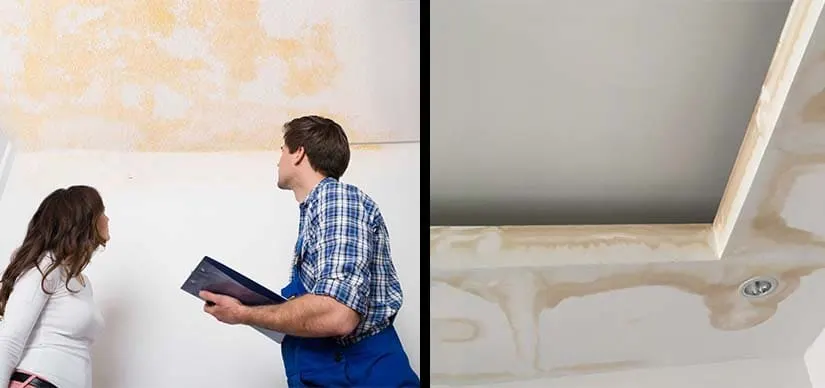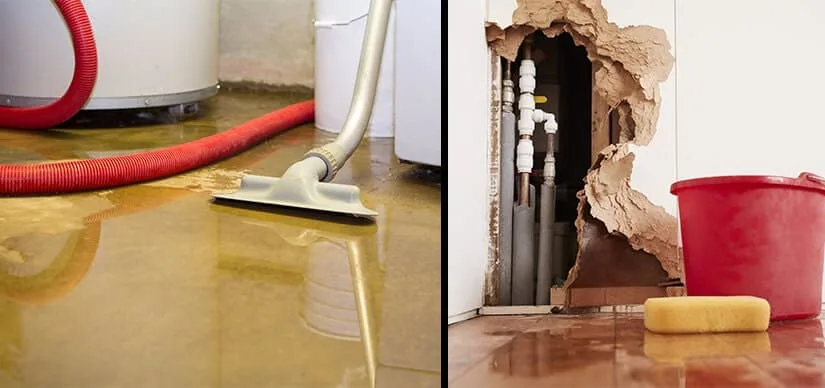Know Some Common Causes of Water Leakage
Views : 1121
 (1).webp)
An interior leak is a severe problem that needs prompt attention. Defective seals, poor waterproofing, broken air conditioning, and corroded or leaking pipes are some potential causes of water leakage. The effects of a leaking pipe in the house might be rather varied. An in-depth check of the house’s condition is certainly required, but in the meanwhile, consider the following causes and effects.
Causes of a Water Leak
Finding and fixing the most common water leak in San Diego homes is one of the most significant ways to stop leaks from happening again.
Some of the causes of a water leak in San Diego are:
- There are pitch-black patches on the ceiling and walls.
- A musty, old odor.
- The wallboard and paint are crumbling and peeling.
- Visible leakages.
- There are bugs, notably termites.
- Variable colors and watermarks.
The presence of dampness in your home is dangerous and a sign of water seepage or leaking. Home dampness or the bacteria that thrive in wet environments can cause various issues, including skin rashes, allergies, asthma, nasal and throat congestion, coughing, and wheezing.
Locating Leaks in the Entire House
Using a water meter can help locate both large and small leaks. The following are some fast ways to check for leaks using your water meter:
- Turn off the main water supply valves inside and outside the house first. Sprinkler controllers, washing machines, dishwashers, and other automatic water devices must not be used.
- Water meter readings should be recorded and then waited for 15 minutes. In the meantime, save water.
- Write down the meter’s current reading. If the meter used water during the check, there might be a leak. There may be a tiny piece of water-using machinery lurking in the shadows of your home that you haven’t checked yet.
The meter test will reveal the truth in cases of significant leakage alone. This test cannot confirm indoor leaks that are less than a drip. Even if leaks are detected by this method, their precise position will not be known. To find and identify all significant leaks, more research is required.
Water Line Leaks
The pipe connecting the water meter to the house occasionally has a history of leaking. Finding the source of water leak in San Diego in a supply line at least 3 feet (0.91 m) underground might be challenging. It’s not uncommon for water that leaks to make its way back to the meter along the pipe.
If water is found in the meter box and not from irrigation runoff or rain, it may result in a leak in the supply line. Additionally, leaks can occur at the point where the supply line enters or emerges from the foundation. Soil moisture in these areas is an indicator of a leak.
After a severe leak, water will generally begin to seep up toward the ground’s surface above the underground pipe’s course. Leaks in the water meter or the lines leading to the meter are the water company’s responsibility; however, leaks in the pipe segment between the meter and the house are often the homeowner’s responsibility.
Before contacting the water company, don’t attempt a DIY repair on the water pipe. If the utility determines that the leak originated in the homeowner’s residence, the leak must be fixed by a licensed plumber in San Diego. A homeowner should not try to fix this alone.
The causes of a house’s interior leaks:
- Water seepage from a sink base — often from a loose bottle-trap connection to the waste coupler.
- Dripping faucets — worn or hardened washers, debris in the faucet, or improper shutoff can cause leaks that worsen quickly.
- Hidden dripping pipes inside walls — they cause wall deterioration and persistent moisture that’s hard to remove.
- Vegetation growth on walls — an indicator of moisture problems or leaks in the wall.
- Voids in wall cavities that collect water — these promote dampness and can spread contamination inside the home.
- Rust and corrosion in old plumbing — corrosion weakens pipes, raises leak risk, and can worsen existing problems.
- Disconnected or failing pipe couplings — joints and connections are common weak points that develop leaks with age and stress. A frequent cause of water leaks in San Diego.
- Thermal expansion and contraction — extreme temperature swings can crack pipes and produce leaks.
- Appliance leaks (water purifiers, freezers, etc.) — unnoticed appliance leaks can severely damage floors and increase electrical shock risk.
- Roof or terrace leaks — failed waterproofing or poor pitch lets water pool and seep into the interior, risking wiring and finishes.
- Excessive pressure or pressure surges — fittings and pipes have limits; overpressure can cause cracking and leaks.
Understanding these common causes will help you spot potential hidden water damage early and decide when to call a professional for inspection and repair.
Conclusion
Damage to your home and the promotion of unwanted biological growth are both results of water being lost due to leaks. Most plumbing systems are out of sight, making it hard to spot a leak. Putting a stop to water leaks in San Diego shouldn’t take too much time. In curing all plumbing issues, EZ Plumbing USA can help you with their expertise and safeguard your property from water damages.
Read More - Common Causes of Slab Leaks

.jpg)


